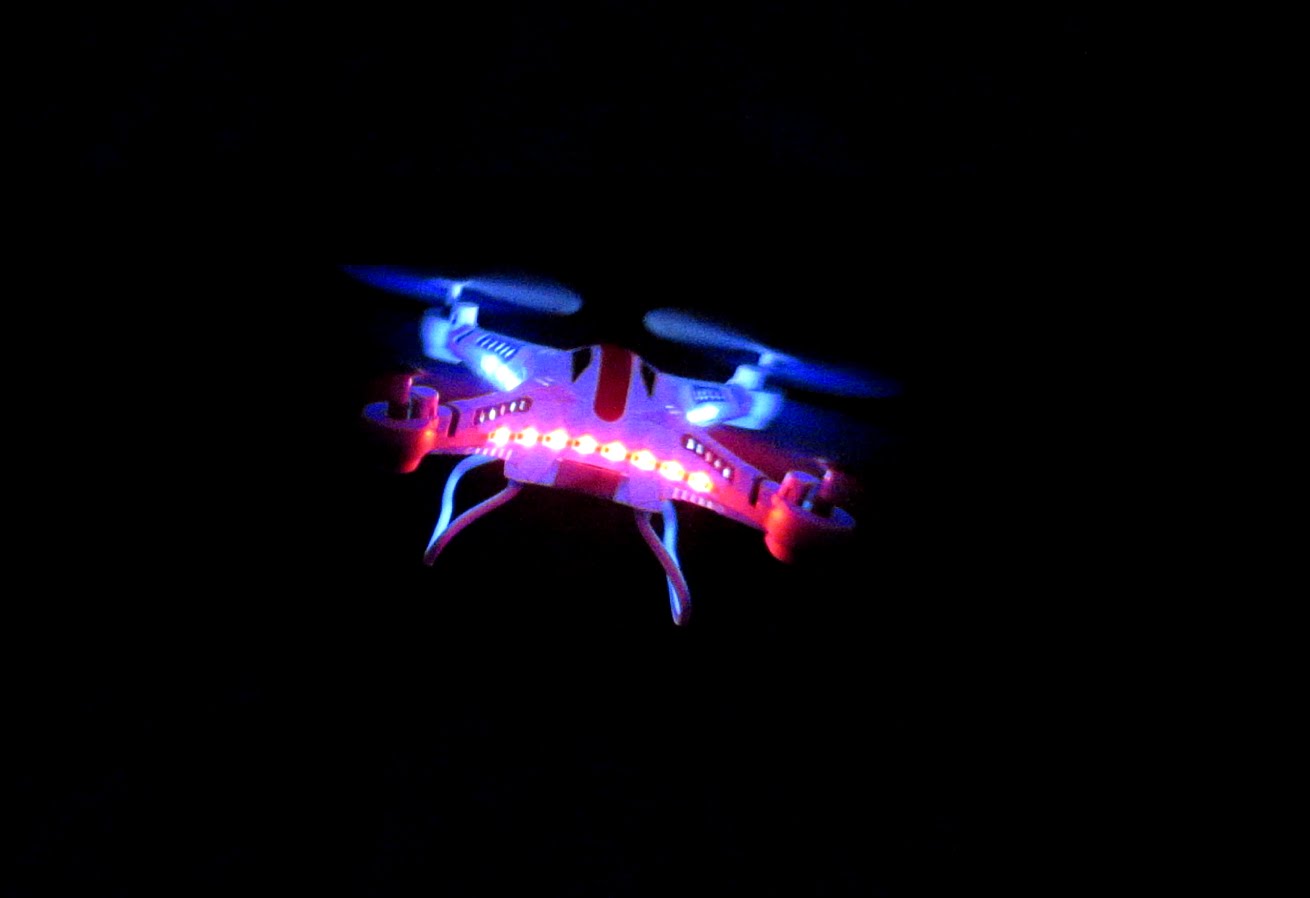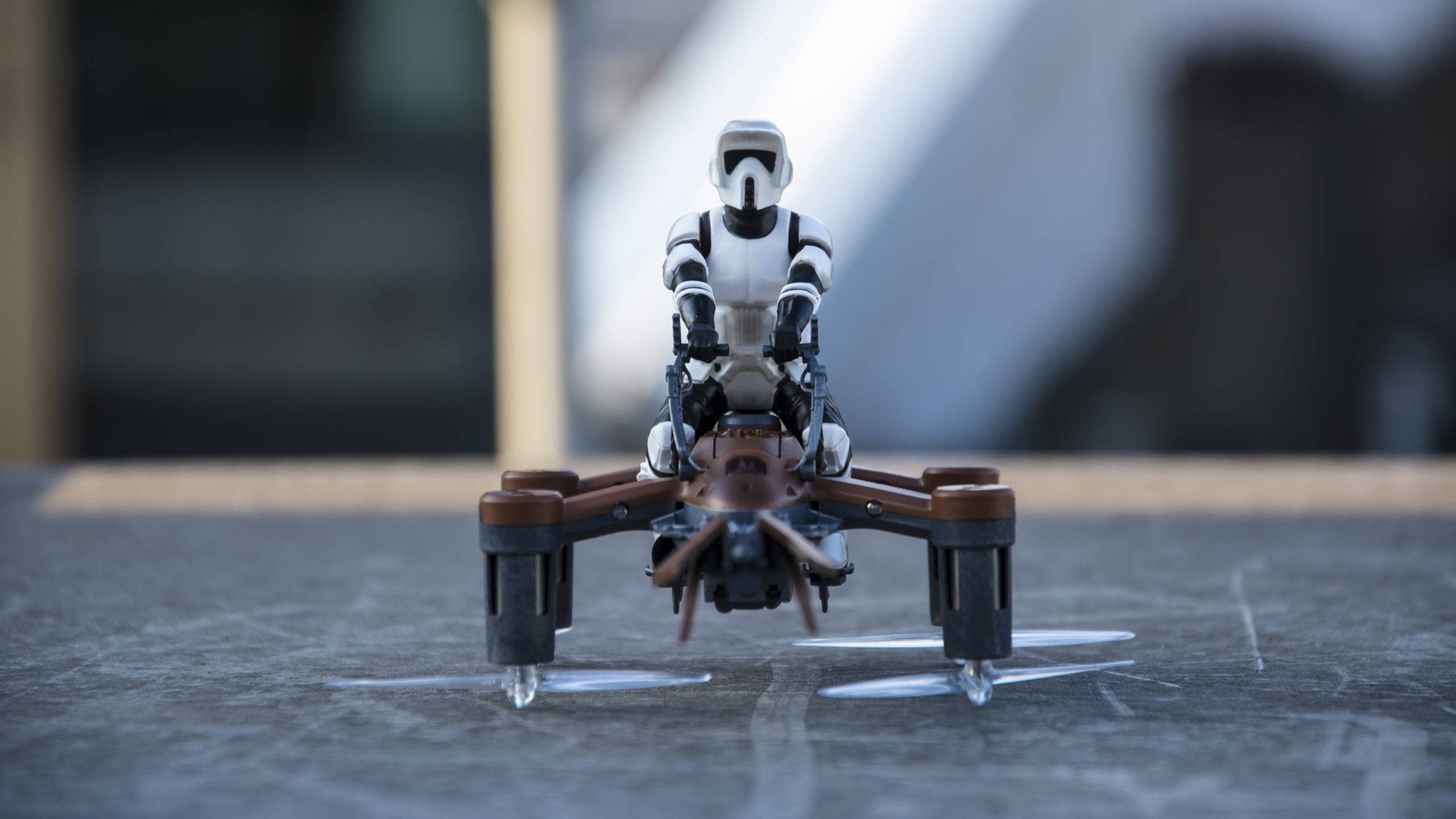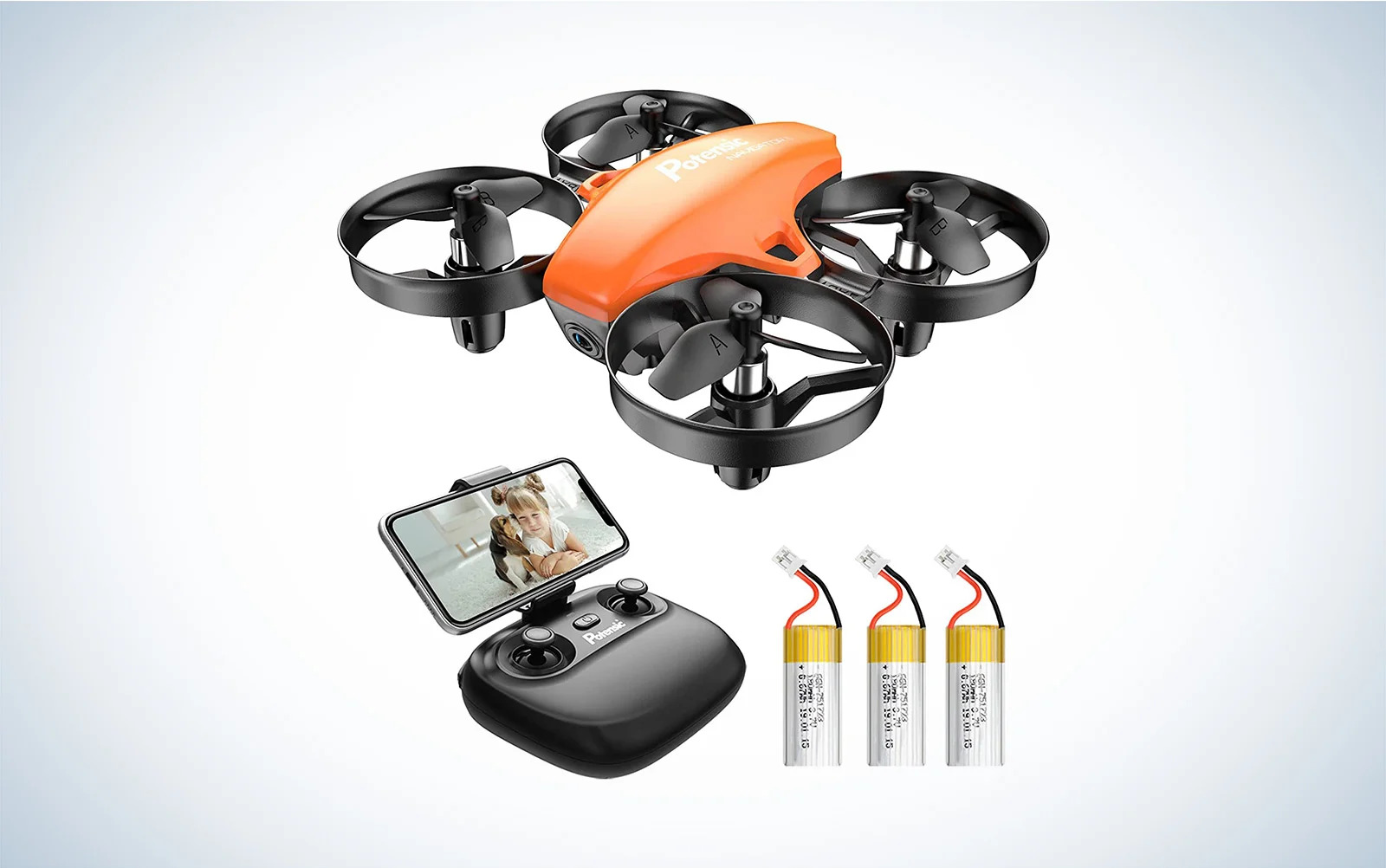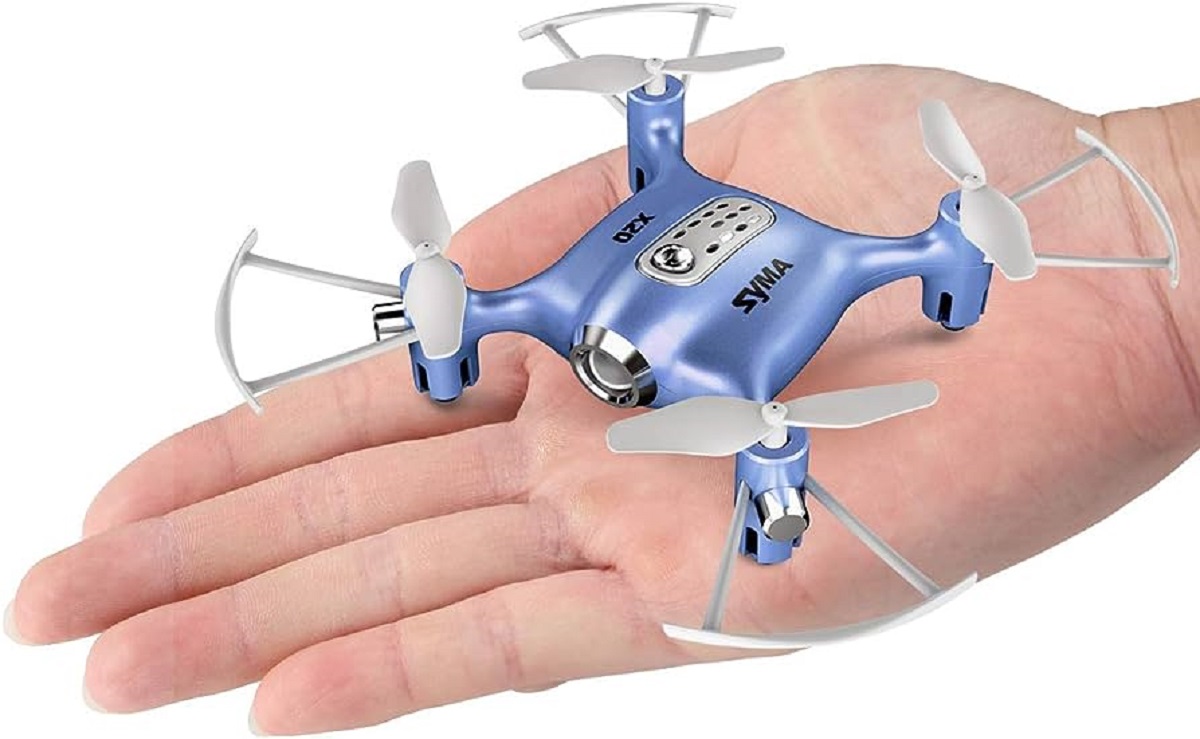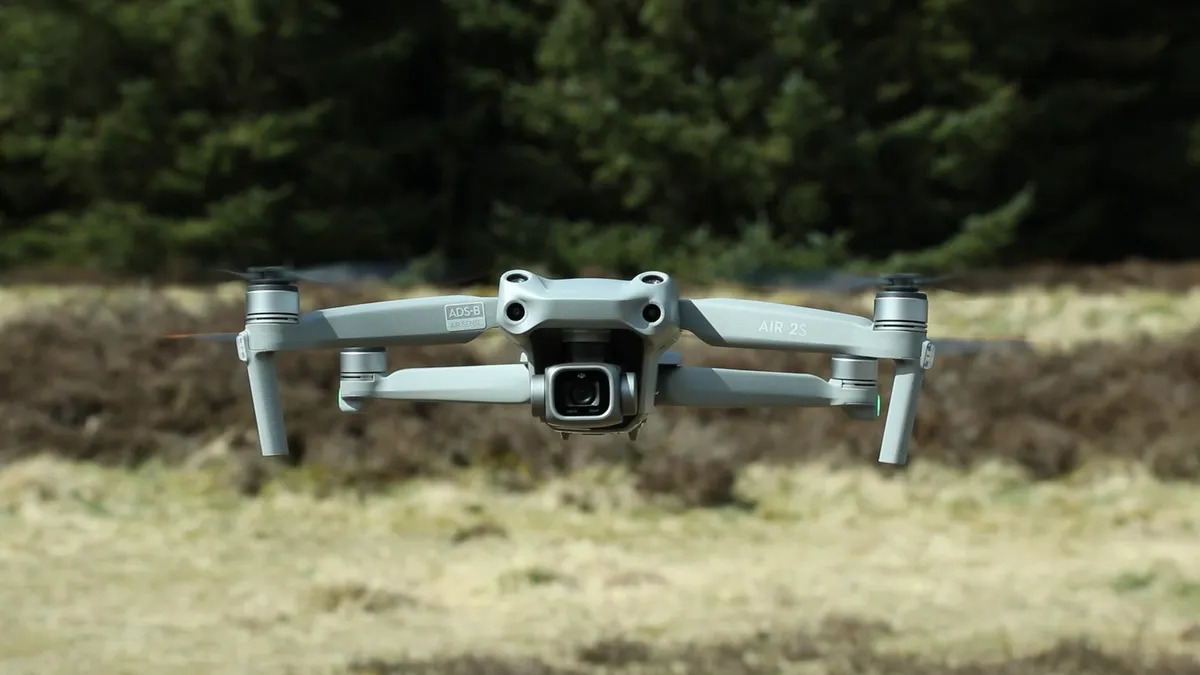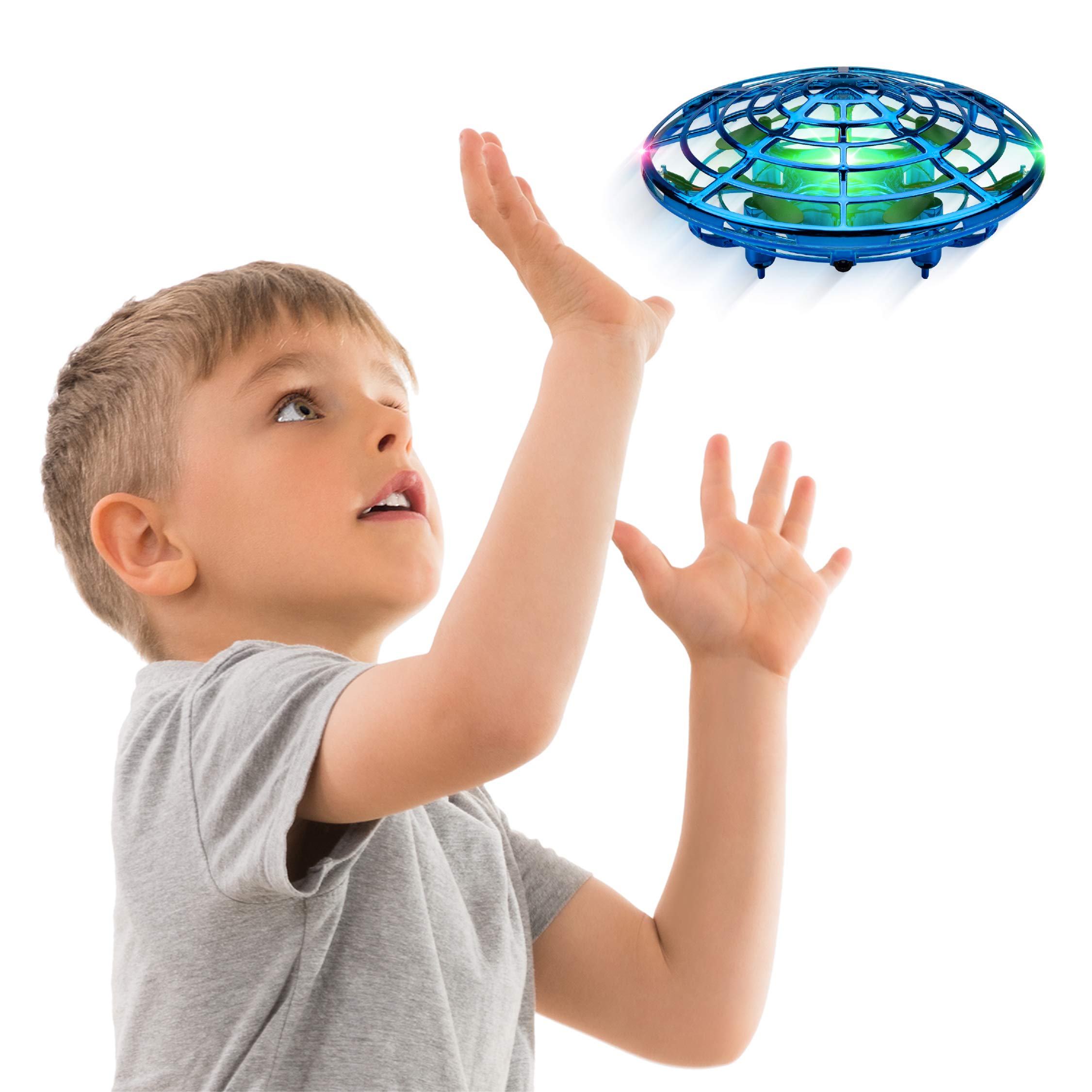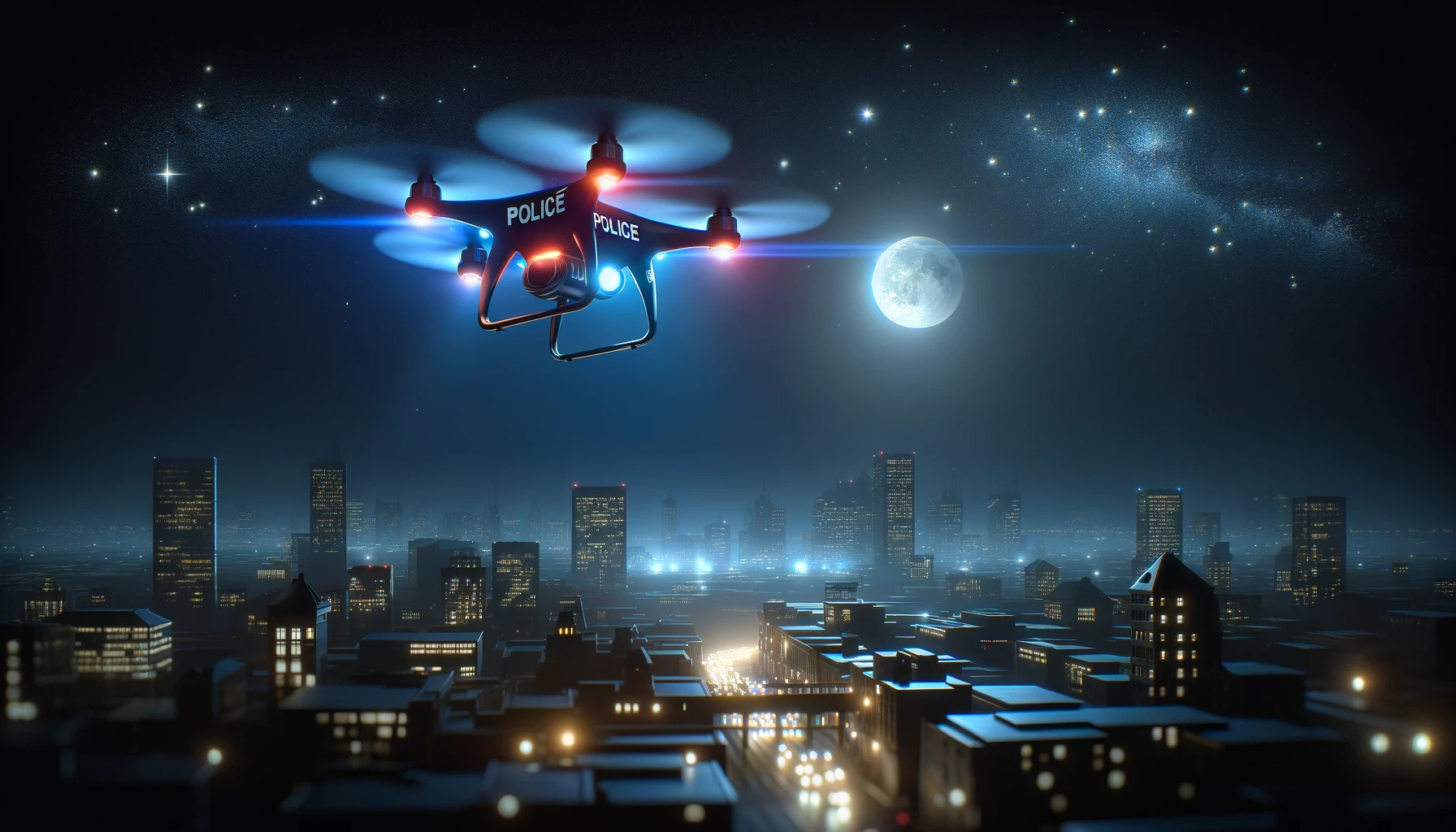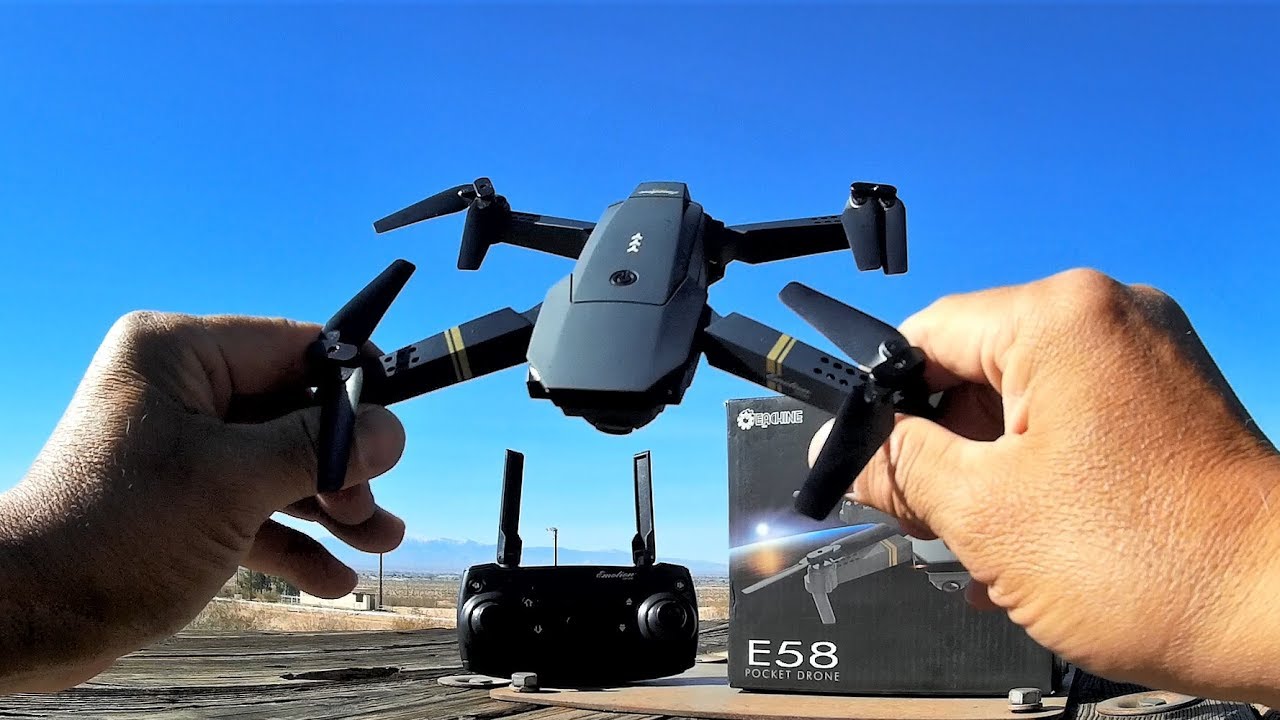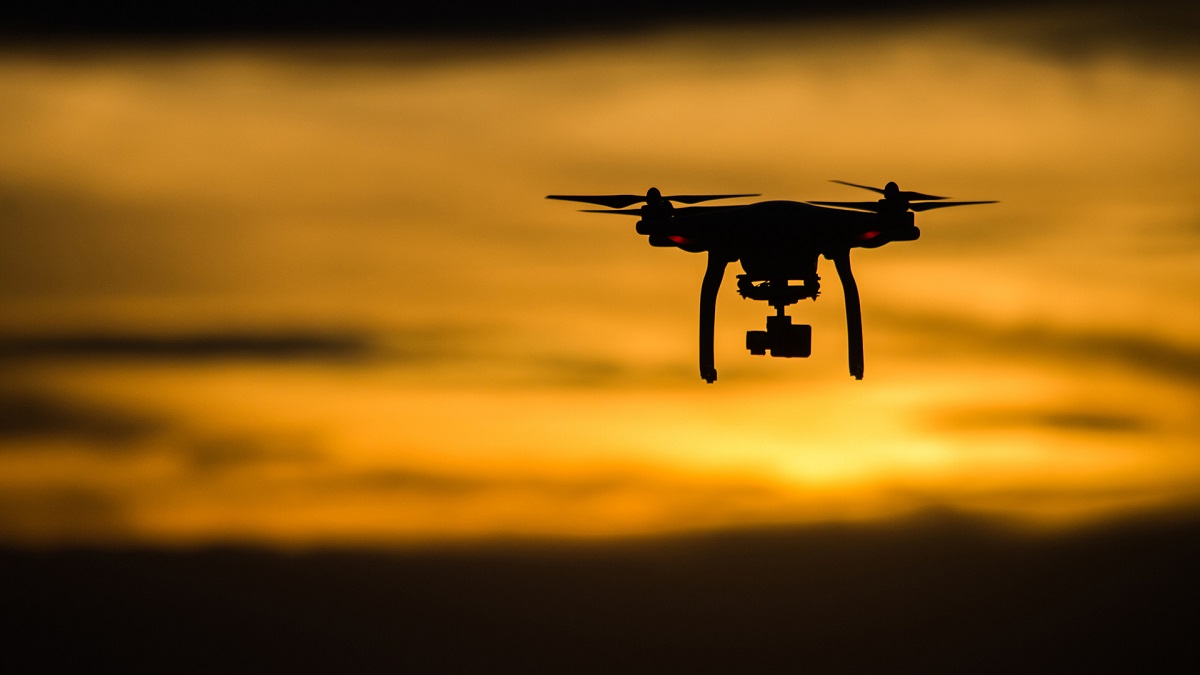Introduction
Drones have become increasingly popular in recent years, being used for various purposes such as aerial photography, surveillance, and even package delivery. While drones are commonly associated with daytime use, their capabilities extend far beyond daylight hours. In fact, drones can be equally, if not more, fascinating when flown at night.
Operating drones at night brings a whole new dimension to their functionality, allowing for unique perspectives and possibilities. The darkness provides a canvas for drones to explore, capturing stunning images and videos that would otherwise be unseen during the day. Additionally, flying drones at night can be beneficial for certain industries, providing advantages that are not available during daylight hours.
In this article, we will delve into the world of drones at night, exploring their capabilities, advantages, and considerations. We will also discuss the various types of drones that are designed specifically for night operations and the technology that enables them to navigate and capture clear footage even in low-light conditions.
Furthermore, we will explore the common uses of drones at night, ranging from professional applications such as search and rescue operations to recreational activities like nighttime drone racing. We will also address the safety concerns associated with flying drones at night and the legal regulations that govern their use during nighttime hours.
Whether you are an enthusiastic drone pilot or simply curious about the nighttime possibilities of these flying devices, this article will provide you with valuable insights into the world of drones at night and the endless opportunities they offer.
The Basics of Drones
Drones, also known as unmanned aerial vehicles (UAVs), are remote-controlled aircraft that have gained significant popularity in recent years. They are equipped with various sensors, cameras, and navigation systems, allowing for a wide range of applications. Understanding the basics of drones is crucial to appreciate their capabilities for night operations.
At their core, drones consist of a frame or body that houses the necessary components. They are usually constructed using lightweight materials such as carbon fiber or plastic to ensure easy maneuverability. The body also contains the drone’s power source, which is typically a rechargeable battery.
Drones are powered by electric motors, which drive propellers or rotors mounted on the frame. These rotors generate the necessary lift for the drone to become airborne and maintain stability during flight. The rotors are connected to electronic speed controllers, which regulate the speed and power supply to each rotor, enabling precise control of the drone’s movement.
Controlling a drone is achieved through a remote controller or a smartphone app, with most drones offering both options. The remote controller communicates wirelessly with the drone, transmitting commands and receiving telemetry data such as altitude, speed, and battery level. It allows the pilot to control the drone’s movement, adjust its direction, and initiate specific actions.
Furthermore, drones are equipped with onboard sensors and navigation systems to ensure safe and stable flights. These sensors include accelerometers, gyroscopes, and compasses, which provide vital information about the drone’s orientation and position. Additionally, GPS receivers are commonly integrated into drones, allowing for precise positioning and navigation.
Many drones feature integrated cameras or gimbals to capture high-quality images and videos during flight. These cameras can be remotely controlled, enabling pilots to adjust the camera angle and capture different perspectives. Some advanced drones even offer the capability to stream live video footage to a connected device, providing real-time monitoring.
Overall, understanding the basics of drones is fundamental for comprehending their night operations. The construction, power source, control systems, and onboard sensors all play a crucial role in enabling drones to operate efficiently and safely, both during the day and at night.
The Different Types of Drones
Drones come in various shapes and sizes, each designed with specific functionalities and capabilities to meet different needs. Understanding the different types of drones is essential for choosing the right one for specific applications, including nighttime operations.
1. Consumer Drones: Consumer drones are the most common type, designed for recreational and photography purposes. They are typically affordable and easy to fly, making them popular among hobbyists and amateur photographers. Consumer drones often come equipped with built-in cameras for capturing aerial photos and videos.
2. Professional Drones: Professional drones are more advanced and feature higher-quality cameras and additional functionalities. They are commonly used in industries such as aerial photography, cinematography, surveying, and inspection. Professional drones can handle complex missions and may have longer flight times and higher payload capacities.
3. Racing Drones: Racing drones are specifically designed for high-speed competitions. They are lightweight, agile, and built for maximum maneuverability. Racing drones often come without cameras and instead focus on speed, control, and durability.
4. Surveillance Drones: Surveillance drones are used for monitoring and gathering information in security and surveillance operations. They are equipped with advanced cameras, thermal imaging technology, and long-range transmission capabilities. Surveillance drones are commonly used by law enforcement agencies and private security firms.
5. Delivery Drones: Delivery drones, also known as cargo or transport drones, are designed for transporting goods and packages. These drones are equipped with mechanisms to carry and deliver payloads. Companies like Amazon and UPS are experimenting with delivery drones to provide faster and more efficient delivery services.
6. Military Drones: Military drones, or unmanned aerial vehicles (UAVs), are used for military operations, including reconnaissance, surveillance, and targeted strikes. These drones are equipped with advanced technology, such as infrared cameras and missile systems, and are controlled remotely or autonomously.
7. Industrial Drones: Industrial drones are designed for specific industrial applications, such as agriculture, construction, and infrastructure inspections. They are equipped with specialized sensors and cameras to collect data for analysis and decision-making.
8. Night Vision Drones: Night vision drones are specifically designed for nighttime operations. They are equipped with enhanced night vision cameras or infrared sensors, enabling clear visibility and capturing detailed footage in low-light conditions.
Understanding the different types of drones allows individuals and businesses to select the appropriate drone for their specific needs and maximize the benefits of using drones, whether it’s for recreational purposes, professional applications, or nighttime operations.
The Advantages of Using Drones at Night
While drones are commonly associated with daytime operations, there are several distinct advantages to utilizing them during the night. From capturing unique visuals to enhancing safety and efficiency, nighttime drone operations offer exciting possibilities. Here are some key advantages of using drones at night:
1. Enhanced Visuals: One of the primary advantages of flying drones at night is the opportunity to capture stunning visuals that are not possible during the day. The city lights, illuminated landmarks, and starry skies provide a breathtaking backdrop for aerial photography and videography. The contrast of light and darkness creates a dramatic effect, resulting in captivating and memorable imagery.
2. Reduced Disturbance: Flying drones at night can minimize disturbance in highly populated areas. With fewer people outdoors, the noise and visual impact of drones are often less noticeable, making them more suitable for urban settings. This makes nighttime operations particularly ideal for capturing footage in busy cities without causing disruptions or safety concerns.
3. Increased Safety: In certain situations, nighttime operations can provide increased safety benefits. For example, in search and rescue operations, drones equipped with thermal imaging cameras can locate individuals in darkness or difficult terrain more effectively. Drones can also be used for monitoring and surveillance during nighttime security operations, enhancing situational awareness and response capabilities.
4. Improved Efficiency: Flying drones at night can enhance operational efficiency in various industries. For instance, in the agricultural sector, drones equipped with sensors and cameras can monitor crops during critical phases, such as pollination or disease management, without disturbing daily agricultural activities. It allows farmers to cover larger areas more quickly, optimizing resource allocation and crop management.
5. Extended Flight Time: Many drones designed for nighttime operations are equipped with enhanced battery technology, allowing for longer flight durations. With extended flight time, drones can cover larger areas, conduct thorough inspections, or capture more footage without the need for frequent battery swaps or recharging. This is particularly beneficial for professional applications such as aerial surveying, mapping, or infrastructure inspections.
6. Flexibility in Scheduling: Nighttime operations offer flexibility in scheduling. Certain applications, such as filming events or conducting surveys, may require operations outside of normal business hours. Flying drones at night allows for more diverse scheduling options, accommodating specific project needs and minimizing disruptions to regular activities.
While operating drones at night presents its own set of challenges and considerations, harnessing the advantages it offers can unlock new possibilities and expand the range of applications for drones in various industries. By utilizing the unique characteristics of night operations, drone pilots and businesses can leverage enhanced visuals, increased safety, improved efficiency, and extended flight time to achieve their goals.
How Drones are Equipped for Night Flights
Operating drones at night requires specific equipment and technology to ensure safe and successful flights. While some drones are specifically designed for nighttime operations, others can be equipped with additional features and accessories to enable night flights. Here are some key components and technologies that allow drones to navigate and operate effectively during the night:
1. LED Lights: Many drones come equipped with built-in LED lights that help improve visibility and orientation at night. These lights are typically positioned on the drone’s arms or undercarriage and can be customized in terms of color and intensity. LED lights make it easier for pilots to monitor their drones’ position and maintain visual contact, especially in low-light conditions.
2. Anti-Collision Systems: To enhance safety during night flights, drones may be equipped with anti-collision systems. These systems use advanced sensors, such as ultrasonic or laser-based sensors, to detect obstacles and avoid collisions. They provide real-time feedback to the drone’s flight controller, enabling it to make adjustments and maneuver around potential hazards.
3. GPS and Navigation Systems: Most drones, including those used for nighttime operations, are equipped with GPS receivers and advanced navigation systems. These systems allow precise positioning, waypoint navigation, and return-to-home functionalities. When flying at night, GPS and navigation systems become particularly crucial for maintaining flight stability and ensuring accurate flight paths.
4. Low-Light Cameras: Nighttime drone operations often require specialized cameras that can capture clear footage in low-light conditions. Drones equipped with low-light cameras utilize advanced image sensors and technology, such as larger pixel sizes, wider dynamic ranges, and increased light sensitivity, to produce high-quality images and videos even in dimly lit environments.
5. Thermal Imaging Cameras: Thermal imaging technology is commonly used in drones for various nighttime applications. These cameras detect thermal radiation emitted by objects and create visual representations of temperature variances. Thermal imaging allows drones to identify heat signatures, making them valuable in search and rescue operations, surveillance, and inspections where identifying objects or individuals in the dark is critical.
6. Improved Battery Technology: Extended flight time is essential for effective nighttime operations. Drones designed for night flights often incorporate improved battery technology, such as higher capacity batteries or optimized power management systems. These advancements enable drones to operate for longer durations, ensuring sufficient time and coverage for various applications.
Equipped with these specialized components and technologies, drones are capable of navigating and capturing clear imagery during nighttime operations. LED lights facilitate visibility, anti-collision systems enhance safety, GPS and navigation systems provide accurate positioning, specialized cameras ensure clear footage, and improved battery technology allows for extended flight times. Combined, these features enable drones to perform effectively and safely in nighttime environments.
Night Vision Technology on Drones
Night vision technology plays a crucial role in enabling drones to see and capture clear footage in low-light or dark environments. This technology allows drones to operate effectively during nighttime operations, providing valuable visual information that would otherwise be difficult or impossible to perceive. Here are some key components of night vision technology used on drones:
1. Infrared (IR) Sensors: Infrared sensors are commonly used in night vision technology on drones. These sensors detect and capture the infrared radiation emitted by objects, converting it into visible images or video footage. Infrared sensors are particularly useful in scenarios where there is insufficient visible light, allowing drones to “see” in complete darkness or low-light conditions.
2. Thermal Imaging Cameras: Thermal imaging technology is a vital component of night vision on drones. Thermal cameras detect the heat signatures emitted by objects and create visual representations based on the temperature differences. This enables drones to identify and track objects or individuals, regardless of the ambient light levels. Thermal imaging is particularly useful in search and rescue operations, surveillance, and inspections conducted at night.
3. Low-Light Cameras: Drones equipped with low-light cameras can capture high-quality images and videos in environments with minimal lighting. These cameras utilize advanced image sensors and technology to enhance the sensitivity to light. By capturing more light, low-light cameras allow drones to produce clear footage even in challenging lighting conditions, such as moonlit landscapes or cityscapes illuminated by streetlights.
4. Image Enhancement: Night vision technology on drones often incorporates image enhancement algorithms and software. These enhancements can improve the visibility of the captured footage by reducing noise, enhancing contrast, and adjusting brightness levels. By optimizing the visual quality, these enhancements allow for better interpretation of the images and videos, making it easier to identify objects or gather information.
5. Real-Time Monitoring: Many drones with night vision capabilities offer real-time monitoring of the captured footage. This allows pilots or operators to assess the situation immediately, even in darkness. Live video feeds transmitted from the drone to a connected device give users a continuous view of the surroundings, enabling them to make informed decisions or take necessary actions promptly.
Night vision technology equips drones with the ability to operate effectively in challenging lighting conditions, particularly during nighttime operations. Utilizing infrared sensors, thermal imaging cameras, low-light cameras, image enhancement, and real-time monitoring, drones can capture clear footage and provide valuable visual information in darkness or low-light environments. These capabilities make night vision technology a critical component of drones used in applications such as surveillance, photography, inspections, and emergency operations conducted during the night.
Common Uses of Drones at Night
Operating drones at night opens up a range of unique and valuable opportunities for various industries and applications. From professional services to recreational activities, here are some common uses of drones during nighttime operations:
1. Aerial Photography and Videography: Drones equipped with high-resolution cameras and night vision technology offer exceptional opportunities for capturing stunning aerial photos and videos at night. The urban landscape, illuminated landmarks, and colorful city lights create mesmerizing visuals that add a touch of magic to any media project.
2. Security and Surveillance: Nighttime drone operations can play a significant role in security and surveillance activities. Drones equipped with thermal imaging cameras or night vision technology enable monitoring and reconnaissance in low-light conditions. They can be utilized for perimeter surveillance, crowd monitoring, and identifying potential security threats.
3. Search and Rescue Operations: Drones equipped with thermal imaging cameras and infrared sensors are invaluable in search and rescue missions during the night. They can help locate missing persons or stranded individuals in remote areas, densely forested regions, or disaster-stricken environments. The thermal imaging capabilities of drones allow the identification of heat signatures, making it easier to detect persons even if they are hidden or camouflaged.
4. Emergency Response: Drones can support emergency response efforts at night by providing real-time situational awareness. They can survey disaster areas, assess damages, and assist in coordinating rescue efforts. The ability of drones to quickly maneuver and access hard-to-reach locations makes them valuable tools for gathering crucial information during nighttime emergencies.
5. Agriculture and Inspections: Nighttime drone operations offer advantages in agricultural activities and inspections. Drones equipped with specialized sensors and cameras can monitor crop health, identify pest infestations, and assess irrigation needs during critical periods. Inspections of infrastructure, such as power lines, towers, or bridges, can also be conducted more efficiently at night, minimizing disruptions to daytime operations.
6. Film and Entertainment: Nighttime drone operations provide unique opportunities for aerial shots in film and entertainment projects. Whether it’s capturing thrilling chase sequences, enhancing the atmosphere of a scene with city lights, or showcasing nighttime events, drones can bring a dynamic and cinematic perspective to productions.
7. Recreational Activities: Nighttime drone flying is increasingly popular among recreational drone pilots. It allows enthusiasts to explore their surroundings from a bird’s-eye view after sunset, capturing beautiful nightscapes or experimenting with light painting techniques. Many drone racing events also take place at night, adding an extra level of excitement to the experience.
These are just a few examples of the common uses of drones during nighttime operations. The ability of drones to navigate, capture clear footage, and provide valuable insights in low-light conditions opens up endless possibilities across various industries and recreational pursuits.
Safety Considerations When Operating Drones at Night
Operating drones at night introduces additional challenges and risks that need to be carefully managed to ensure safe and responsible operations. Here are some important safety considerations to keep in mind when operating drones at night:
1. Visibility: Limited visibility is a significant concern when flying drones at night. It’s essential to maintain a clear line of sight with the drone at all times to avoid collisions with obstacles or other aircraft. Ensure that the drone’s lights are visible, and fly in well-lit areas whenever possible. Use anti-collision lights and reflective markings to enhance the drone’s visibility to others.
2. Obstacle Avoidance: Flying at night increases the risk of colliding with objects that may not be easily visible in the darkness. Ensure that the drone is equipped with obstacle avoidance technology, such as sensors or cameras, to detect and avoid obstacles. Fly at a safe altitude and be cautious of tree branches, powerlines, buildings, and other potential obstructions.
3. Weather Conditions: Weather conditions can be more challenging to assess accurately at night. Check weather forecasts and be prepared for changes in wind conditions, temperature, and precipitation. Avoid flying in adverse weather conditions such as strong winds, rain, or fog, which can affect the stability and control of the drone.
4. Knowledge of the Area: Familiarize yourself with the area where you plan to fly the drone at night. Be aware of any restricted airspace or no-fly zones, such as near airports or government facilities. Understand the local regulations and laws regarding drone operations and abide by them to ensure compliance and safety.
5. Battery Life: Monitor the battery life of the drone carefully, as it can deplete faster at night due to the increased power consumption of lights and other systems. Plan your flights accordingly to ensure a safe return-to-home or landing before the battery reaches critical levels. Be mindful of the drone’s flight time limitations and plan for shorter flights if necessary.
6. Sleep and Fatigue: Operating drones at night can disrupt normal sleep patterns and contribute to fatigue. Ensure that you are well-rested and mentally alert before flying a drone at night. Fatigue can impair decision-making abilities and reaction times, increasing the risk of accidents. If you feel excessively tired or drowsy, refrain from flying and consider rescheduling the operation.
7. Privacy and Public Sensitivity: Respect privacy rights and public sensitivity, especially when flying drones at night. Avoid flying close to residential areas or capturing images of individuals without their consent. Be aware that the presence of drones at night may cause discomfort or concern to some people, so use discretion and be considerate of others.
Adhering to safety guidelines and regulations is crucial when operating drones at night. By maintaining visibility, employing obstacle avoidance technology, monitoring weather conditions, understanding the area, managing battery life, being well-rested, respecting privacy, and prioritizing safety at all times, drone pilots can enjoy the benefits of nighttime operations while minimizing risks to themselves and others.
Legal Regulations for Flying Drones at Night
When it comes to flying drones at night, it’s essential to understand and comply with the legal regulations set forth by the authorities. These regulations are designed to ensure the safe and responsible operation of drones and protect the privacy and security of individuals. Here are some key legal considerations for flying drones at night:
1. Familiarize Yourself with Local Laws: Research and understand the specific drone regulations in your country or region. Laws regarding drone operations can vary, so it’s crucial to know the guidelines and restrictions that apply to flying drones at night. Familiarize yourself with the applicable aviation authority’s regulations, such as the Federal Aviation Administration (FAA) in the United States or the Civil Aviation Authority (CAA) in the United Kingdom.
2. Observe Operating Curfews: Some jurisdictions may impose operating curfews for drones, prohibiting flights during certain hours. Ensure that you are aware of these curfews and adhere to them. Violating operating curfew restrictions can lead to fines or legal consequences.
3. Visibility Requirements: Many countries require drones to be in the pilot’s line of sight at all times, especially during night operations. Understand the specific visibility requirements applicable to your area and ensure that you maintain a clear visual line of sight with the drone during flights.
4. Lighting and Marking: Depending on the region, drones flown at night may be required to have specific lighting and marking requirements. For example, some regulations may stipulate that drones have anti-collision lights or be marked with reflective materials to enhance their visibility to other aircraft or personnel on the ground.
5. Permission and Authorization: In some cases, flying drones at night may require special permission or authorization from local authorities. Certain operations, such as those conducted near airports, densely populated areas, or sensitive facilities, may require prior approval. Be aware of these requirements and obtain the necessary permits or authorizations before conducting night flights.
6. Privacy and Data Protection: Take privacy and data protection laws into account when flying drones at night. Respect the privacy rights of individuals and avoid capturing images or recording footage in prohibited or sensitive areas. Be aware of any restrictions on capturing and sharing images of people or private property without consent.
7. Commercial Operations: If you are operating a drone commercially, such as for aerial photography or providing services, additional regulations may apply. Depending on the jurisdiction, commercial drone operators may need to obtain specific licenses or certifications and comply with additional safety requirements or operating restrictions.
It is crucial to stay updated with the latest regulations and changes in drone laws, as they can evolve over time. Regularly check for any updates from the relevant aviation authorities or local governing bodies to ensure continued compliance when flying drones at night.
Conclusion
The world of drone technology has expanded to include nighttime operations, offering unique opportunities across various industries and recreational pursuits. Operating drones at night brings a new dimension to aerial photography, security and surveillance, search and rescue missions, and more. However, it is essential to keep in mind safety considerations and adhere to legal regulations to ensure responsible and safe drone operations.
Understanding the basics of drones, the different types available, and the specific equipment required for night flights is crucial for maximizing their capabilities. Night vision technology, such as thermal imaging cameras and low-light sensors, enables drones to navigate and capture clear footage in darkness or low-light conditions.
The advantages of using drones at night are diverse and compelling. Enhanced visuals, reduced disturbance, increased safety, improved efficiency, extended flight time, and flexible scheduling are just some of the benefits that nighttime operations can offer. These advantages have led to an increasing number of applications for drones at night, spanning from professional services like aerial photography and security to recreational activities such as drone racing.
However, safety is a top priority when operating drones at night. Maintaining visibility, employing obstacle avoidance technology, considering weather conditions, being aware of the area, managing battery life, prioritizing rest to avoid fatigue, and respecting privacy rights and public sensitivity are all critical factors to ensure safe nighttime drone operations.
Furthermore, complying with legal regulations governing the operation of drones at night is paramount. Familiarize yourself with local laws, observe operating curfews, meet visibility and lighting requirements, obtain necessary permissions or authorizations, and respect privacy and data protection laws to avoid legal consequences and promote responsible drone use.
In conclusion, the world of drones at night offers a realm of possibilities for stunning visuals, improved safety and efficiency, and innovative applications. By understanding the technology, adhering to safety considerations, and staying updated with legal regulations, drone pilots can harness the full potential of nighttime operations while ensuring the responsible and safe use of drones.







